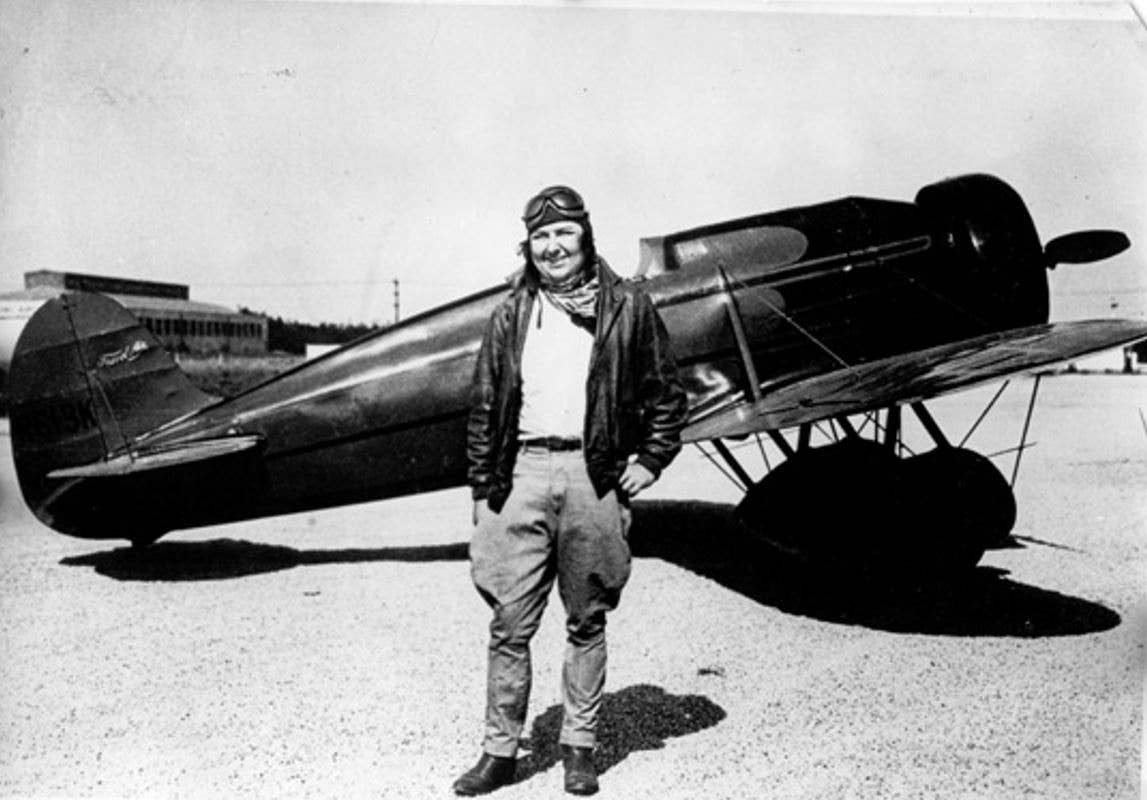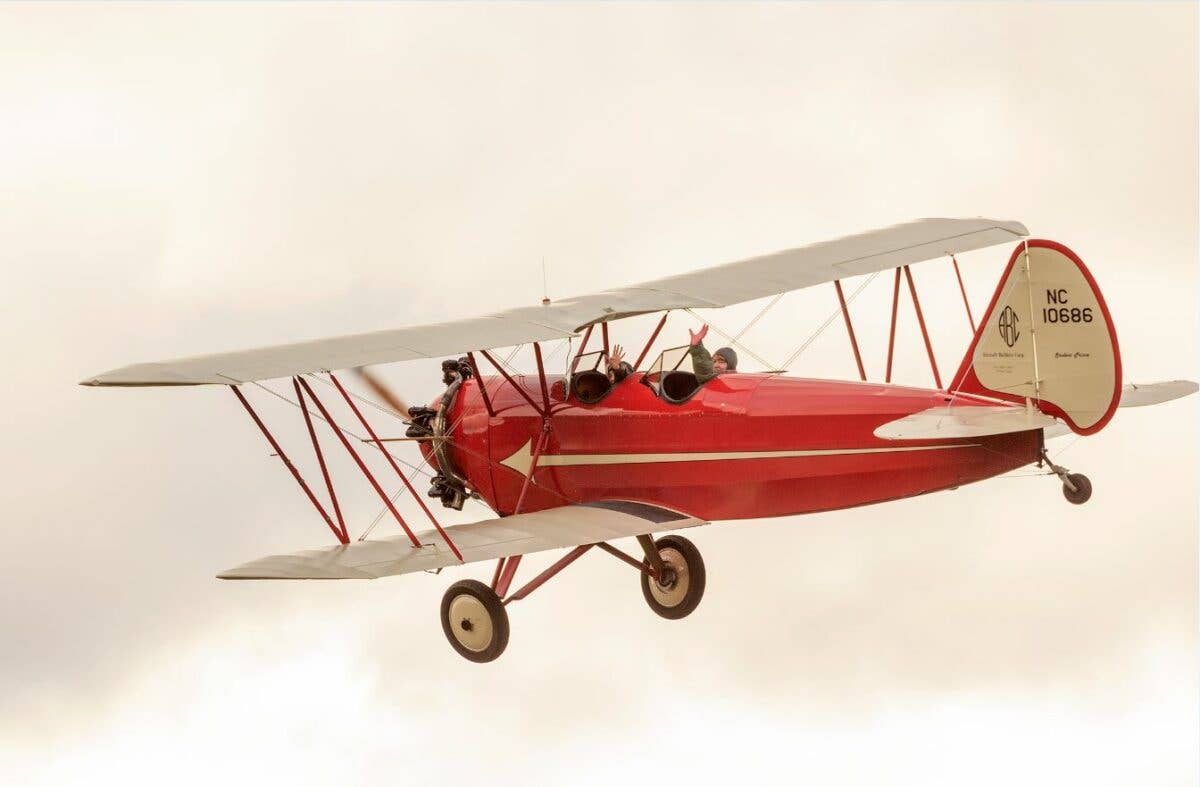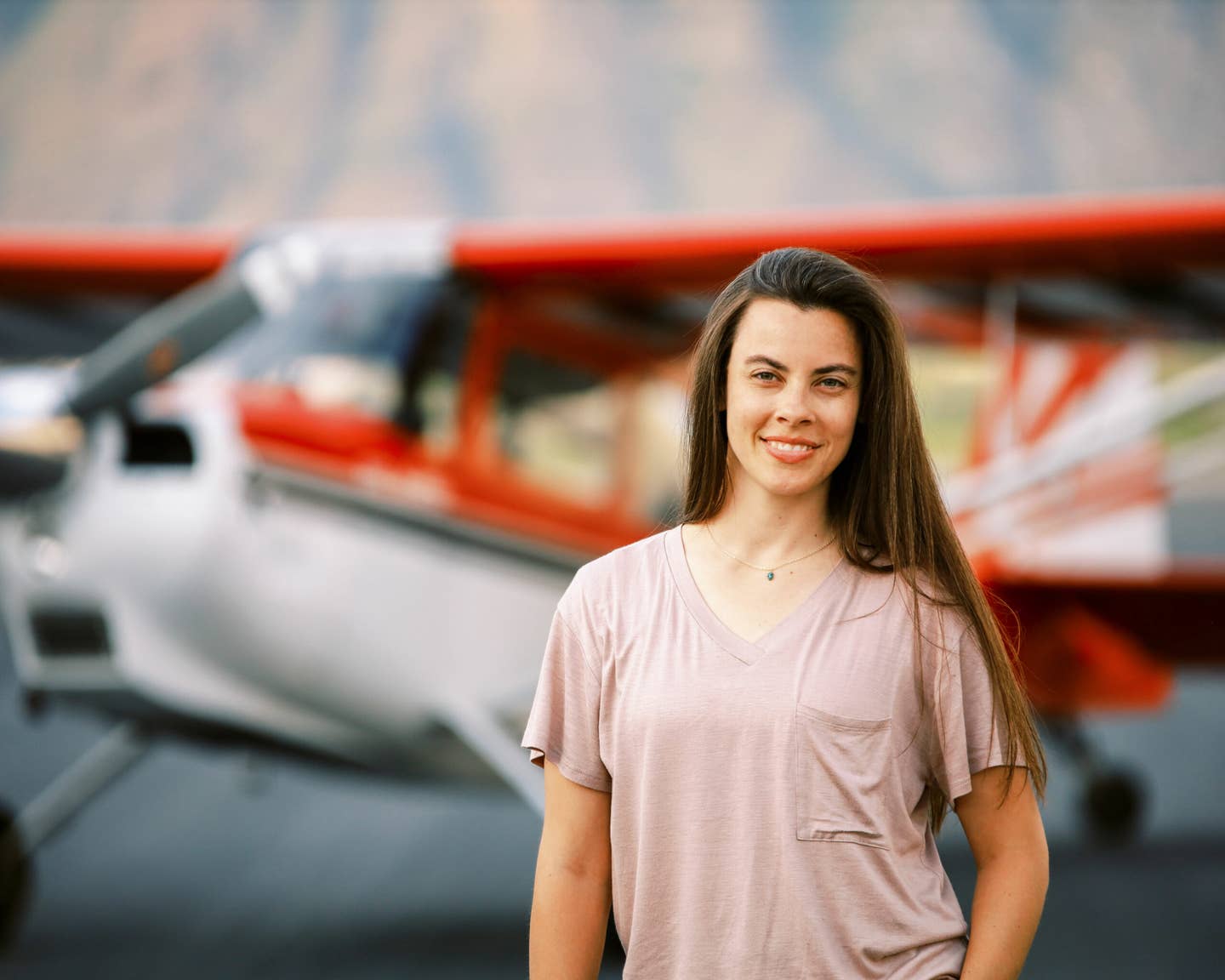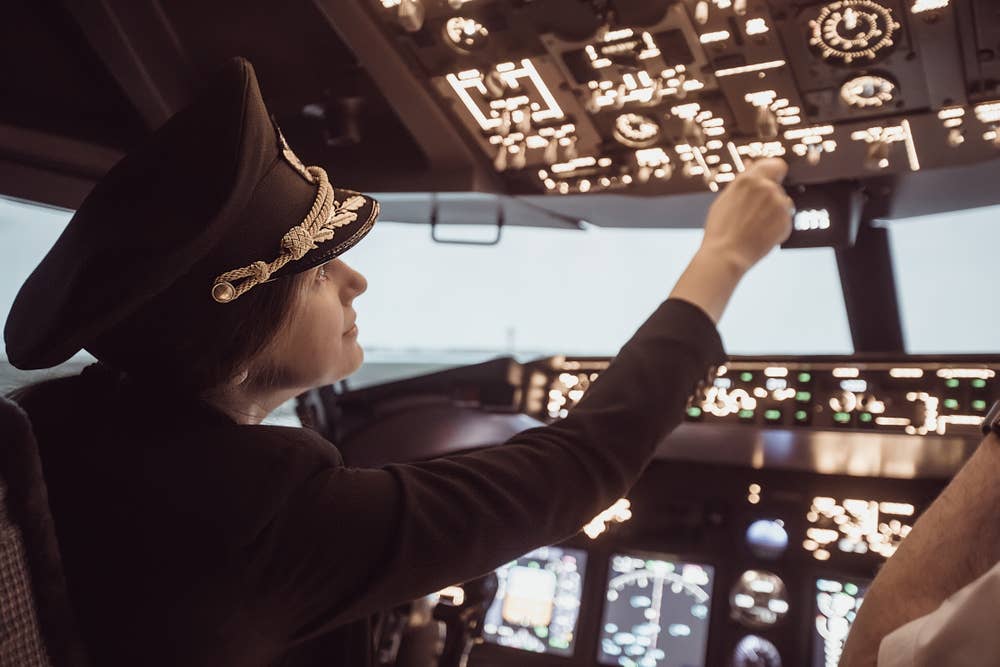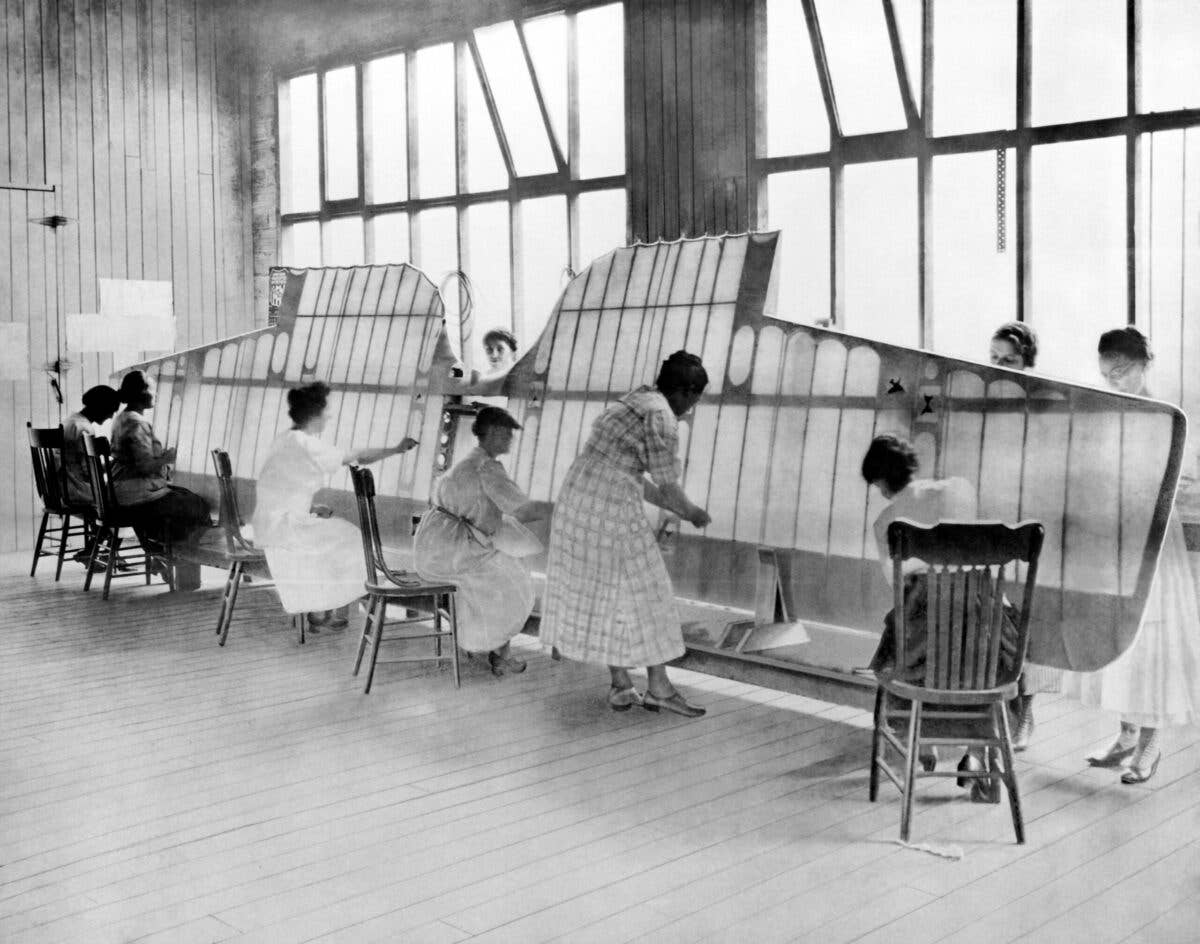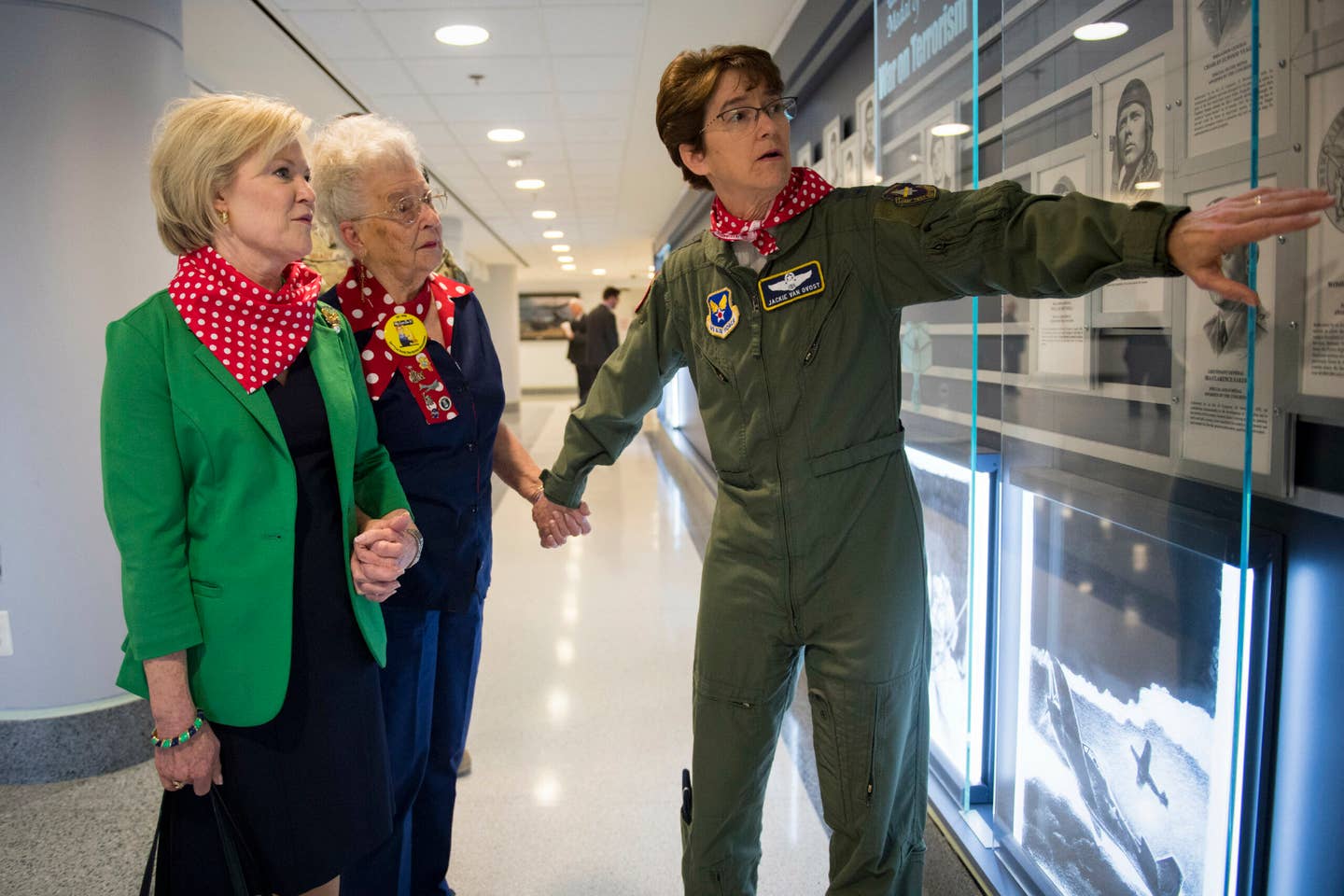When Women Earned Their Wings: the USAF’s First Crop of Female Pilots
Forty-five years ago, the U.S. Air Force admitted 10 women into undergraduate pilot training, marking its first class of female aviators.
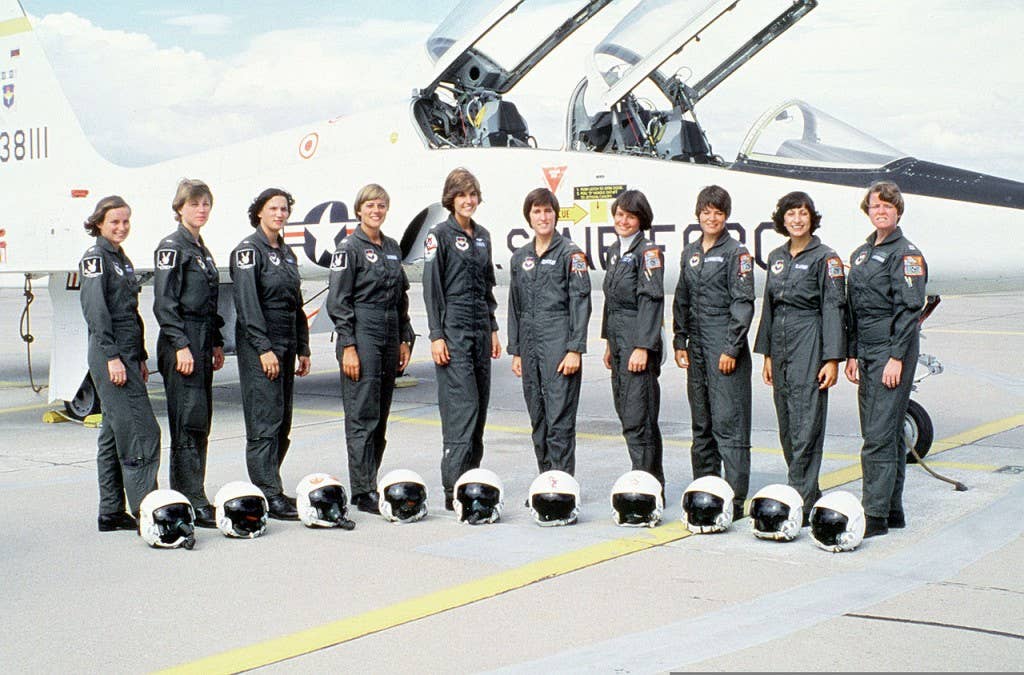
In 1975, Chief of Staff of the Air Force, Gen. David C. Jones, announced the launch of a test program that would enable women to enter pilot training and staff a now all-volunteer force after the abolishment of the military draft following the Vietnam War. The first 10 women earned their silver wings Sept. 2, 1977. [Courtesy: U.S. Air Force]
Editor’s Note: This article is part of a month-long series to mark Women’s History Month: March 1: Pioneers of Women’s Aviation | March 2: Carole Hopson | March 4: Martha King | March 8: Association for Women in Aviation Maintenance | March 11: The Air Race Classic | March 15: Sisters of the Skies | March 18: Women in Aviation Conference | March 22: Bonny Simi of Joby Aviation | March 29: The First Graduating Class of Air Force Female Pilots | March 31: Top Female Difference Makers in Aviation
When Kathy LaSauce graduated college in the early 1970s, she knew her career options were limited. She could be a school teacher, or perhaps a Pan-Am stewardess, a job that required applicants to be college educated and speak at least two languages.
Going a different route, she decided to follow her brother's lead and walk into a U.S. Air Force recruitment station. It didn’t occur to her at the time that she was taking the first steps in making history—when she and nine other women would become the very first class of women accepted into the service's undergraduate pilot training program.
It would be one of many "firsts" for LaSauce—who went on to achieve the rank of lieutenant colonel—as well as the women pilots of USAF UPT Class 77-08.
Up until the mid-1970s, opportunities remained very limited for women in the U.S. Air Force, as well as the other services. ROTC and military academies, such as the U.S. Air Force Academy, weren't options.
The U.S. Navy made its first foray into opening flight training to women with an announcement in October 1972 inviting select women to apply to its experimental program. The first six would be pinned with “Wings of Gold” beginning in February 1974.
But women were ready to test the skies with Air Force wings—it was only a matter of a couple of years.
"The only way a woman [could] get in the Air Force as an officer was through Officer Training School (OTS), which was 90 days," LaSauce told FLYING. In 1972, LaSauce gained one of only two available slots for Officer Training School in the Long Island, New York, area.
"They really kind of didn't want us, you know?"
Kathy LaSauce, member, USAF UPT Class 77-08
Once in, she faced even more barriers.
"We were not allowed to do the obstacle course. We were not allowed to do small arms training. We didn't do sports with the guys. We sat on the sideline and we cheered," she said.
"They really kind of didn't want us, you know?"
While in OTS, more changes happened as the Air Force opened up some of the more non-traditional career fields to women. Following her training, LaSauce grabbed the opportunity, landing at Chanute Air Force Base, Illinois, where she joined what became the first maintenance officer class offered to women.
There, she learned about aircraft engines, hydraulics, electronics, and aerodynamics. When she landed at her first duty station as a C-141 maintenance officer, she encountered another unforeseen issue.
"They did not have a uniform for women on the flightline," she said. She adapted by wearing men's fatigues before it was sanctioned by the service.
Just as uniforms were rapidly changing, so were laws. In late 1975, President Gerald Ford put pen to paper, signing into effect a new law that allowed women access to the U.S. Service Academies starting in 1976.
"Under the bill, women will be subject to the same academic and other relevant standards for appointment, admission, training, graduation, and commissioning (except for those minor adjustments required because of physiological differences) applicable to men," the White House said in an October 8, 1975, statement.
Within the next year, the Air Force Academy would open its doors to women cadets, and would later graduate 157 women in its first female class in 1980. At the same time, the USAF also opened up flight training for women through a test program.
As the Air Force Academy opened up to women, another small opportunity emerged for women already in the Air Force—a test program to train a small number of female pilots. LaSauce, along with dozens of other women, applied.
"As a maintenance officer, that is what got me selected because a lot of the girls had private pilot's licenses," she said. LaSauce, however, knew a lot about C-141 Starlifters, C-5 Galaxies, and C-130s.
Once she was accepted into undergraduate pilot training (UPT), the gravity of what it meant settled in.
"I knew it was important that we do well. And I knew that my success would matter to women that would come after me," LaSauce said. "But I really didn't realize how important it was for us to succeed."
The First 10
"Prior to this class, there was already…this push to integrate women fully and completely into the United States Air Force, and throughout the DOD and all branches of the military service," said Christina Douglass, museum curator at the National Museum of the U.S. Air Force. "In terms of setting the stage, [the opening of military academies] was landmark, but there were really big rocks that I think women and our country had to go through."
More than four dozen women in the Air Force representing a variety of backgrounds and career services applied for the UPT test program, and 10 were selected, Douglass said. Their selection was based upon the same qualification requirements of men at the time, which meant they had to have recommendations, be physically fit, and possess an academic and superior service background.
"The only difference is…and this was kind of a big one, none of these women had graduated from the United States Air Force Academy," which didn't graduate its first class with women until 1980," Douglass said.
Their integration into the training meant every aspect of their acceptance was based upon the same requirements of men. "It was done specifically in order to hold women to the same standards as men, and not give anybody any excuse to say, 'No, you're not qualified,'" she said.
The Women of UPT Class 77-08
| Capt. Mary Donahue |
| Capt. Christine Schott |
| Capt. Susan Rogers |
| Capt. Kathy LaSauce |
| Capt. Connie Engel |
| 1st Lt. Victoria Crawford |
| 1st Lt. Sandra Scott |
| 2nd Lt. Mary Livingston |
| 2nd Lt. Carol Scherer |
| 2nd Lt. Kathy Rambo |
In September 1976, the 10 women joined 35 male classmates for training at what is now former Williams Air Force Base in Arizona. The 48-week course included nearly 800 hours in academic, flying and officer training, as well as 210 hours of flight time in a Cessna T-37 and Northrop T-38 trainers. One year later, all 10 earned their pilot wings.
"They had been in the Air Force and were ready to serve and wanted to serve," Douglass said. "They wanted an opportunity to fly airplanes. They knew they weren't going to be able to do everything they would have or were capable of, but they wanted to do it anyway because at the time, they were very aware that they were opening a door."
The Challenges of Being First
Once in pilot training, another challenge cropped up for the women.
"Now the problem was that they had folks that really did not want us to succeed," LaSauce recalled. Instructors had to write a daily report on the women's performance in class and on flights. The reports then went up the chain of command, sometimes up to the Pentagon.
LaSauce said that, years later, she learned that a Pentagon official questioned the training program after reports that two of the female students got sick during flight training. The issue, however, was dropped when another Pentagon official asked for a comparison of the number of male students getting sick after sitting in 100-degree heat in an airplane on a ramp in Arizona.
"They showed the numbers for the men, and so that was no longer a valid reason to stop it," she said.
Then, there was the patch for the 3526th Pilot Training Squadron, Tipper Flight. The patch, which features a Playboy bunny logo, had a history at Williams. And while the photo of the scantily clad Playboy model had been removed from the flight room, the patch remained on women's uniforms.
Wearing the small patch didn't bother the female students as much as what came from it.
"Playboy magazine got wind of that," leading the magazine to run a photo of the 10 women in the magazine, LaSauce said, who noted that by that time, their photo was in the public domain.
Just like the issues she and the other women pilots faced in male-dominanted environments, such as officer and pilot clubs, LaSauce chose to not complain about the Tipper patch.
"You had to pick what battles you had to fight," she said.
Building a Legacy
In September 1977, UPT-77-08 graduated three pilots short of its original roster of students, but all 10 women made it through, LaSauce said.
The women went on to make even more history.
The class graduates would become: the first female T-38 instructor, who also flew T-38 chase for the space shuttle program, according to Women in Aviation International; the first female instructor assigned to the Air Force Academy; the first female C-9 aircraft commander; and the first female tanker commander.
And LaSauce? She became the first woman to command a C-141 aircraft, the first female pilot to fly in the 89th Airlift Wing at Andrews Air Force Base, Maryland, and the first woman to command an aerial port squadron.
Forty-five years later, the percentage of female pilots in the Air Force remains in the single digits, though it's growing. In 2021, about 7.2 percent of active duty officers with a pilot rating were women, up from 5.6 percent reported in 2017, according to the service.
Female USAF Active Duty Officers with a Pilot Aeronautical Rating
| 2017 | 770 females | 5.6 percent |
| 2018 | 798 females | 5.9 percent |
| 2019 | 859 females | 6.3 percent |
| 2020 | 909 females | 6.6 percent |
| 2021 | 992 females | 7.2 percent |
The number of women interested in becoming pilots at the Academy is growing too, according to school officials.
“As an organization dedicated to developing officers of character for the U.S. Air Force and U.S. Space Force, both women and men of the cadet wing tend to demonstrate extremely high interest in aviation and space careers throughout their four-year education,” said Col. John Garver, director of operations and analysis, U.S. Air Force Academy.
The percentage of women in the graduating class of the U.S. Air Force Academy interested in pilot careers
| Class of 2019 | 38 percent |
| Class of 2020 | 43 percent |
| Class of 2021 | 40 percent |
"The test program opened a door, which these women pushed through for others to follow," according to Women in Aviation International, which inducted UPT Class 77-08 into its Pioneer Hall of Fame in 2016. "The results were increased opportunities for rank advancement, command opportunities, and ultimately, piloting the entire inventory of Air Force aircraft, test pilot programs, and spacecraft."
For LaSauce, it was an opportunity to serve her country and see the world.
"I'm extremely pleased and honored that our role in history is finally being told," she said. “America knows about the women who flew in World War II, and they know about the women fighter pilots, but I'm afraid history has sort of lost any of the stories of my class, my generation."

Sign-up for newsletters & special offers!
Get the latest FLYING stories & special offers delivered directly to your inbox

